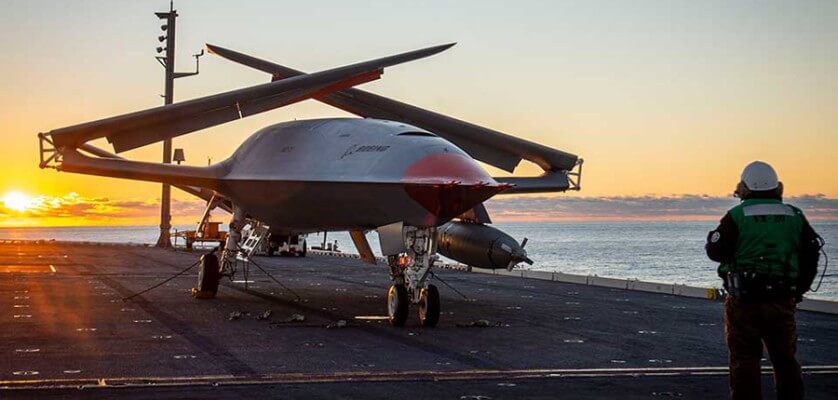

This week’s U.S. Navy news brings a blend of operational updates, collaborations with allies, and internal disciplinary actions, showcasing the Navy’s relentless focus on readiness, accountability, and international cooperation. From critical exercises in the Indo-Pacific to high-stakes rescues in the Pacific, the Navy’s efforts are making waves both at home and abroad.
U.S. Navy Global Engagement and Readiness
1. U.S. Navy Rescues Two Ahead of Hurricane Gilma
In a daring operation, the USS William P. Lawrence (DDG-110) rescued a woman and her seven-year-old daughter from a disabled yacht, Albroc, in the Pacific Ocean just hours ahead of Hurricane Gilma. Coordinating with the U.S. Coast Guard, the destroyer’s small-boat team braved worsening weather to retrieve the survivors, their pet cat, and a tortoise. Unfortunately, the yacht’s skipper, reported deceased, could not be recovered due to the incoming storm.
2. South Korean Shipyard Delivers Maintenance Services for U.S. Navy Vessel
On September 2, a U.S. Navy vessel underwent maintenance, repair, and overhaul at a South Korean shipyard, marking the first time such services have been provided by a foreign facility. This step emphasizes growing collaboration between the U.S. and its global partners to strengthen naval capabilities.
Operations and Exercises
3. USS Bataan Amphibious Readiness Group Conducts Exercises in the Mediterranean
The USS Bataan Amphibious Readiness Group, alongside the 26th Marine Expeditionary Unit, recently carried out exercises in the Mediterranean Sea. These operations are key to ensuring combat readiness and enhancing interoperability with NATO allies, reinforcing regional stability.
4. U.S. Forces Participate in Exercise Ssang Yong 2024
The U.S. Navy and Marine Corps joined forces with the Republic of Korea and the United Kingdom for the biennial Exercise Ssang Yong 2024. Taking place from August 26 to September 7 in South Korea, the exercise featured large-scale amphibious and airborne operations aimed at enhancing the combined defensive posture on the Korean Peninsula. This year’s exercise was notable for the deployment of the U.S. Marine Corps’ Amphibious Combat Vehicle in Korean waters for the first time.
5. USS Hawaii Completes Historic Submarine Maintenance in Australia
The USS Hawaii (SSN-776) made history this week, departing from HMAS Stirling in Western Australia after completing the first-ever joint American-Australian submarine maintenance operation in Australian waters. This major milestone is part of the AUKUS Pillar 1 initiative to establish a sovereign nuclear-powered submarine force for Australia by the 2030s.
Innovation and Technology
6. Navy Tests New MQ-25 Stingray Drone with Carrier Operations
The U.S. Navy has continued testing its cutting-edge MQ-25 Stingray drone on aircraft carriers, aiming to revolutionize naval aviation. The uncrewed aerial refueling drone is set to extend the operational range of U.S. Navy fighter jets, opening new capabilities for long-range missions.
7. U.S. Navy Chiefs Caught Operating Unauthorized Starlink Network
In a shocking revelation, 17 members of the chief’s mess aboard the USS Manchester (LCS-14) were caught operating an unauthorized Starlink Wifi network on the ship, breaking Navy communication regulations. This secret network, installed for personal use, posed a significant security risk. The chiefs involved, led by Command Senior Chief Grisel Marrero, were demoted and faced administrative punishment.
International Partnerships
8. Argentina Joins Combined Maritime Forces
Argentina officially became the 46th member of the Combined Maritime Forces (CMF), the world’s largest maritime security partnership. This historic move strengthens Argentina’s role in global maritime security, particularly in anti-piracy and counterterrorism efforts across critical shipping lanes.
9. Exercise Kakadu 2024 Begins in Australia
The Royal Australian Navy, U.S. Navy, and forces from nine other nations kicked off Exercise Kakadu 2024 in Darwin, Australia. This multinational maritime and air exercise, running from September 9-20, enhances regional cooperation and maritime security while offering valuable training for participating forces.
Security and Deterrence
10. USS Georgia Arrives in Middle East to Deter Iran
The guided-missile submarine USS Georgia (SSGN-729) has arrived in the Middle East as part of a show of force directed at Iran. Armed with over 150 Tomahawk land-attack cruise missiles, the Ohio-class submarine brings substantial firepower to the region amid heightened tensions with Iran and ongoing military support for U.S. allies, including Israel.
11. U.S. Navy Medical Teams Conduct Critical Research in Australia
U.S. Navy medical personnel, alongside Marines from MRF-D 24.3, collected air and soil samples across Australian military bases and Papua New Guinea. This research, aimed at identifying dangerous bacteria like Burkholderia pseudomallei, is part of ongoing efforts to ensure the health and safety of military personnel operating in tropical environments. The data will contribute to long-term studies to reduce health risks in the Indo-Pacific region.
China Watch
China remained focused on strengthening its naval presence in the South China Sea. Reports suggest ongoing activity near disputed areas, with China reinforcing its maritime militia and increasing military patrols. The continued fortification of artificial islands and military installations underscores Beijing’s strategic goals to assert control over vital sea lanes.
Russia Watch
Russia conducted naval exercises in the Arctic this week, highlighting the increasing militarization of the region. The Kremlin also announced new partnerships with other nations to develop its navy further, despite facing economic constraints from ongoing sanctions. These moves are seen as part of Russia’s broader effort to project power across multiple theaters, including the Black Sea and Mediterranean.
Iran Watch
Tensions with Iran remain high following the arrival of the USS Georgia in the Middle East. Iran has responded with increased rhetoric, warning against U.S. military actions in the region. Meanwhile, Iran-backed Houthi rebels in Yemen have continued their missile and drone attacks on shipping lanes in the Red Sea, prompting further U.S. naval action to secure these critical maritime routes.
That’s all for this week’s Navy news. Stay tuned for more updates next week, and as always, support the men and women who serve in the U.S. Navy.


